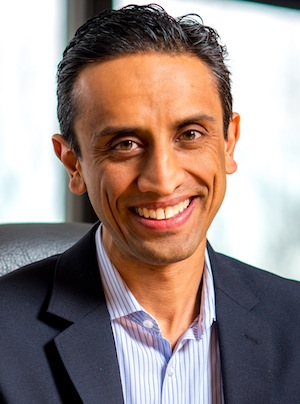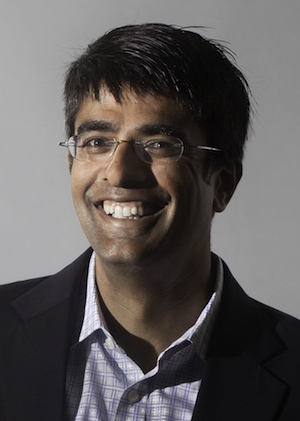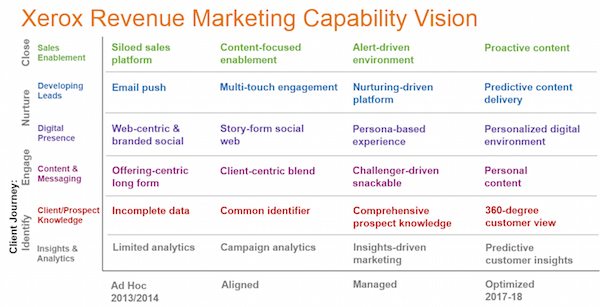“Digital transformation” is a phrase that we hear a lot of these days. But it’s not something that you can simply buy with a stack of marketing software. It requires a deeper change to the strategy, structure, and culture of an organization — something that’s easier said than done.
Which is why it’s always inspiring to me to hear stories of people and companies who have successfully navigated true digital transformation. One of them is Rishi Dave, the CMO of Dun & Bradstreet.
Dun & Bradstreet, founded in 1841, is a 173-year-old public company, which has pulled off a remarkable series of evolutions over the years. Rishi has helped with their digital transformation of marketing over the past year, and graciously took some time to share his experience with us.
Tell us a little about your background and your career path leading up to your current role.
Previous to joining Dun & Bradstreet, I was Executive Director of Digital Marketing at Dell. I had global responsibility for implementing marketing, lead generation, media, and content strategies for Dell.com, social media, mobile, and the digital support of Dell’s events. I also drove Dell’s global web analytics strategy and helped drive the CEO- level strategy as part of Dell’s Corporate Strategy group.
Now, as CMO of Dun & Bradstreet, I oversee all marketing functions. CEO Bob Carrigan joined in October of 2013 and hired me as one of his first external hires as the first CMO at Dun & Bradstreet in recent history. It was clear that he understood and prioritized a modern marketing approach that was not encumbered by the old way of doing things to help take Dun & Bradstreet into a new direction. I am incredibly excited to be a part of that.
What was your mission coming in as CMO at D&B? What are some of the challenges you’ve faced?
My mission is to modernize the brand, making it relevant to our customers today. Dun & Bradstreet has a long and rich legacy, which serves as the foundation of our brand. But what we’re doing today, providing the world’s leading source of commercial data, analytics, and insight on businesses, is what we need to communicate to our partners and to the marketplace.
The first step is bringing clarity to our purpose and values based on conversations with employees, customers, partners, and industry leaders, and developing the right expression through content and creative. Then, we build and execute a modern marketing machine around this, fueled by the right technology, analytics, and content to make the brand come alive in and drive the business.
How have you organized your marketing team to tackle this transformation? In particular, how is marketing technology integrated in your management structure?
I have one global leader managing technology, analytics, digital properties, and operations. I jokingly refer to this organization as the “left brain” team. It’s important to keep these activities together and establish a roadmap that connects all these activities to build an integrated and scalable marketing machine.
I have one global leader managing technology, analytics, digital properties, and operations. I jokingly refer to this organization as the “left brain” team.
By keeping these functions together, my other leaders can focus on driving the strategy and content within this “machine.” My other teams include content strategy (led by a former journalist), PR/Comms/Brand, and solutions marketing (go-to-market strategy).
From your perspective as CMO, how do you strategically think of you marketing stack? What do you bring in-house? What do you customize? What do you look to external service providers to do on your behalf?
There is not one technology provider that brings the entire stack together. There are too many best-of-breed providers throughout the stack, and new innovations and providers are entering the market constantly. We must adapt to this changing environment and understand how optimize our external provider portfolio constantly.
There is not one technology provider that brings the entire stack together. There are too many best-of-breed providers throughout the stack.
In general, we want to minimize customizations unless absolutely necessary to driving our strategy. It increases complexity and cost to do so.
We generally prefer external technology providers, if they are cost efficient to bring on and maintain within the existing portfolio. Marketing technology providers are starting to deliver services on their technology to lower the cost of integration into an enterprise’s processes and help customers maximize value from the platform. Oftentimes this work tends to overlap with work traditionally done by agencies.
What does this relationship between marketing and IT look like? How do you decide what is done within your marketing technology team — by through an outsider provider — and what is turned over to IT proper? Is there a formal governance model in place for this?
My team owns and manages the marketing technology stack. The team works across the business to determine requirements, and establish a run-the-business rhythm with IT.
We also manage the production hand-off points that need to occur between building on the software platform (which marketing owns) and integrating into the company’s internal data (which IT owns) and any supporting hardware infrastructure (which IT owns). We do have a formal governance model around this.
With all the changes you’re implementing, while operating in such a fast-paced and competitive field, how do you enable marketing agility? Are there explicit processes for agile marketing?
First and foremost, you have to set a strong vision and overarching strategy that you clearly and constantly communicate to your employees. With this framework, you have to build the right org structure and processes to allow your organization to drive this vision without micromanagement.
Within this, the culture you build should encourage constant testing, learning, and optimizing. As well, knowing how to manage the right portfolio of outside providers and technology provides the flex capacity and skills to be agile.
Knowing how to manage the right portfolio of outside providers and technology provides the flex capacity and skills to be agile.
We are beginning to pull some concepts from Scrum, but are still evaluating what makes the most sense. In general, it is a great framework to think about marketing execution even if you don’t explicitly use all aspects of the methodology.
What is one overarching recommendation you would give to another CMO being brought in to spearhead the digital transformation of a long-established brand?
Don’t immediately jump into tactics around analytics, technology, and content operations. Digital transformations often put too low a value on strategy and culture. Execution is crucial, for sure, but without establishing a strategy that lights up your customer and builds a loyal relationship with them and a culture that supports this strategy and digital mindset, your execution will not be impactful.
Digital transformations often put too low a value on strategy and culture.
Thanks, Rishi!




Rishi, thank you! As a marketer responsible for digital migration, the information you presented in this article is both inspiring and practical.
Thank you, Julie! I am glad it helped!
Love this story… thank you for sharing!
Thanks for the insight Rishi.
Would you be able to share what type of outsourced teams you use? Content creation, graphics, social media? How do you recommend assessing what to create externally?
Very well written!